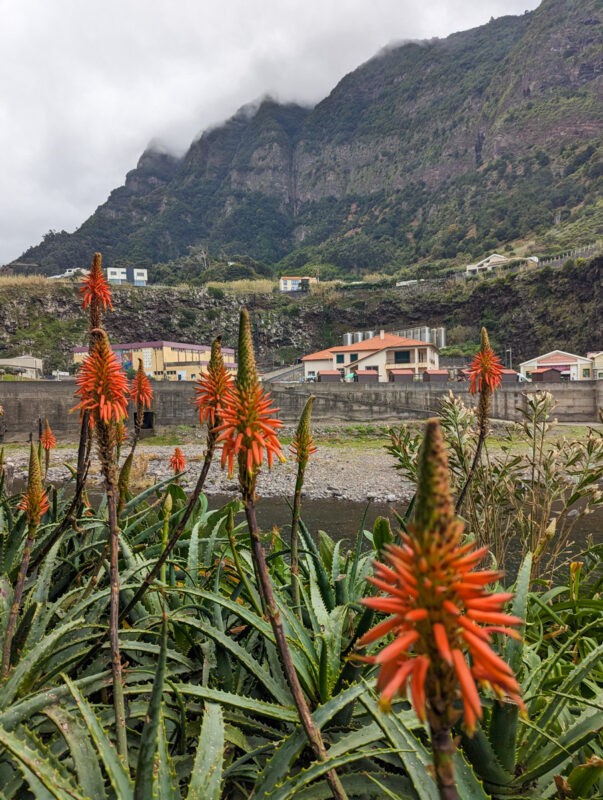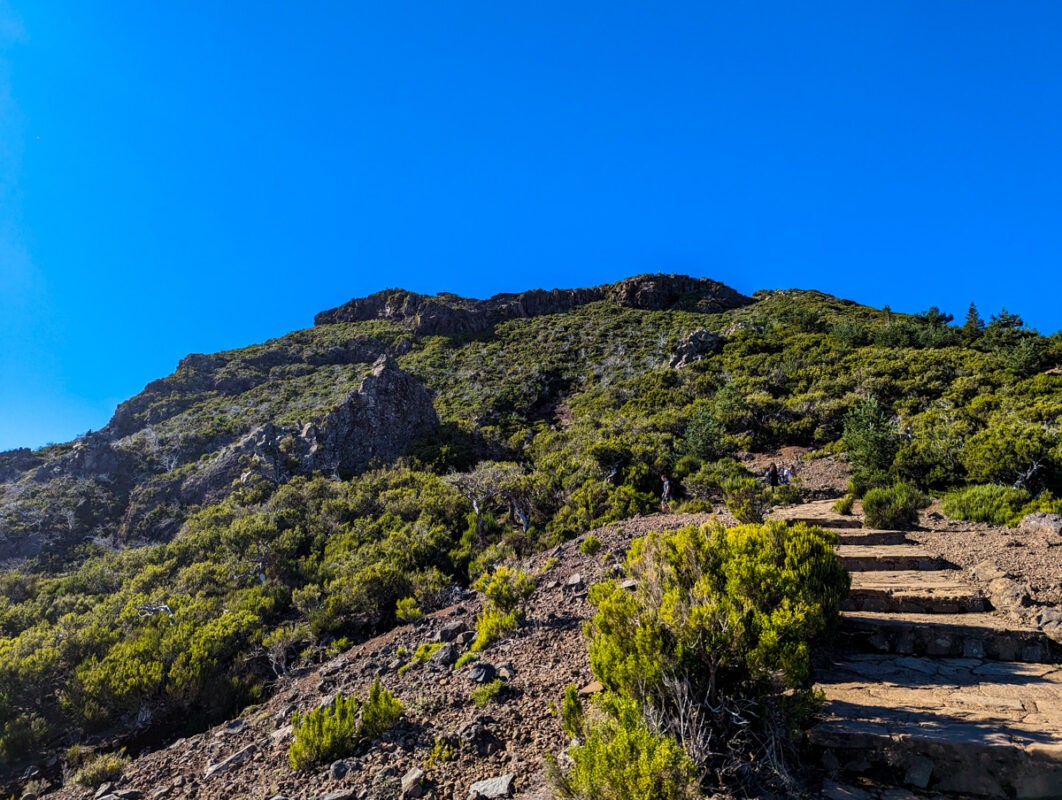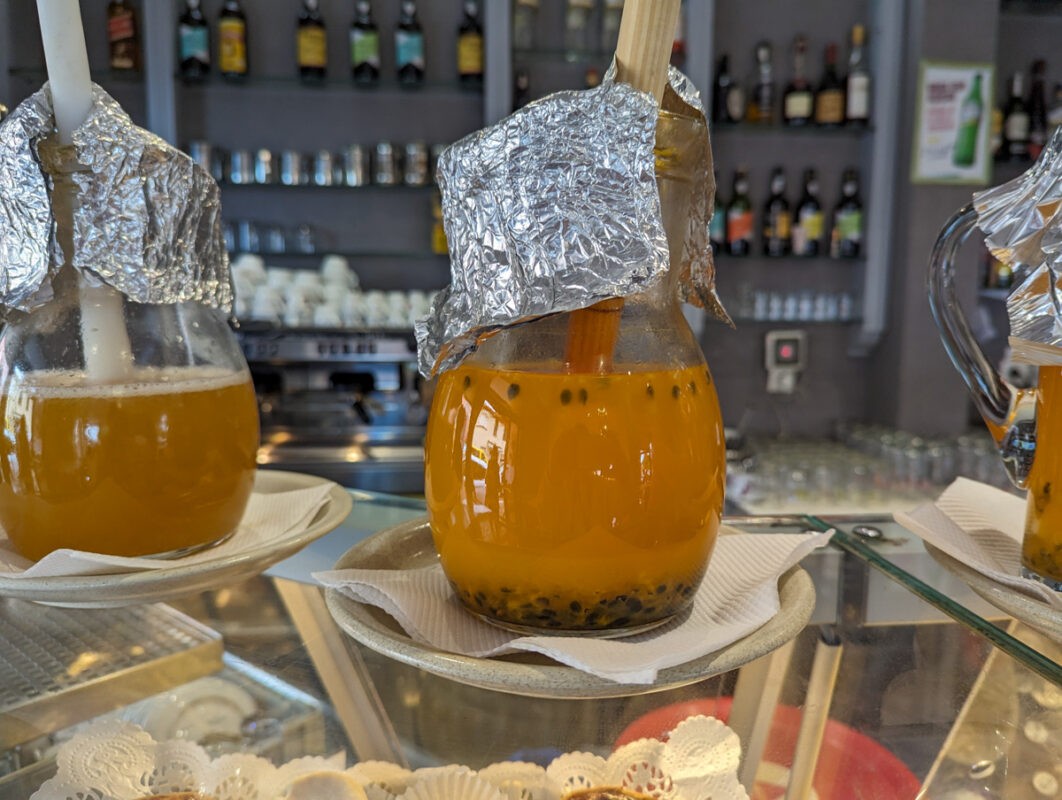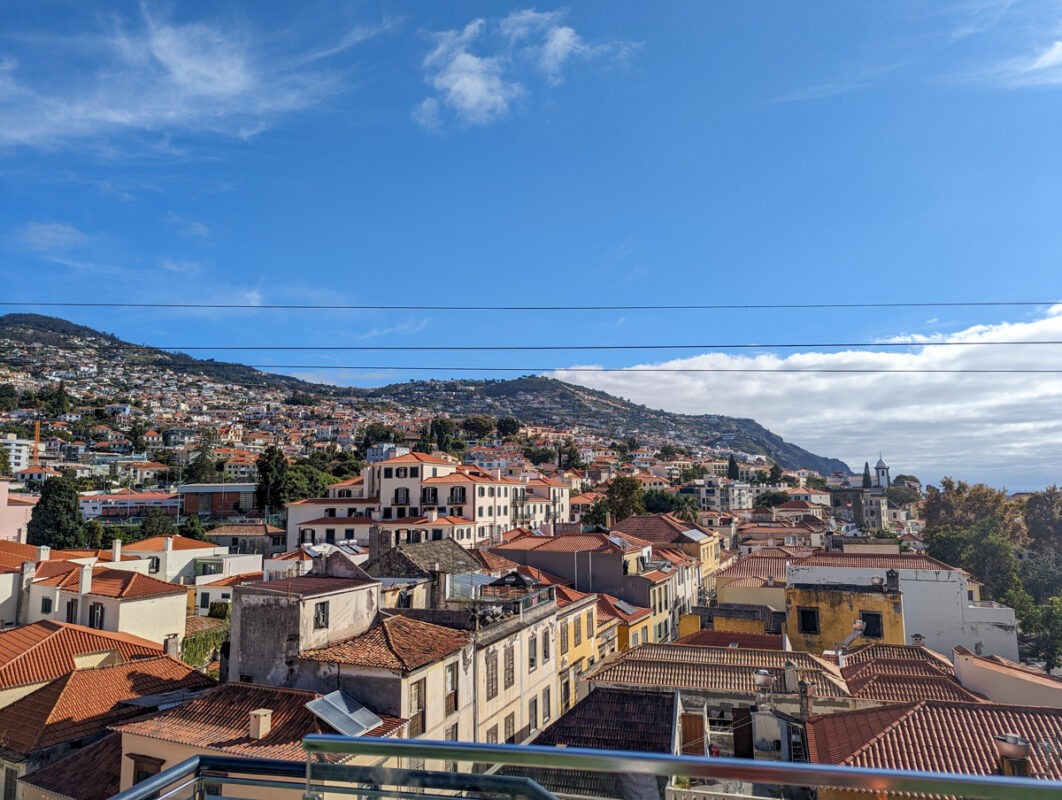What is Madeira known for? Sunshine, hiking and Cristiano Ronaldo!
If you’re planning a trip to Madeira, you might be wondering what the island’s most famous for to help you have the most enriching trip possible!
I recently visited Madeira and spent a long time researching the island beforehand to make sure I didn’t miss any experiences.
So, I put together this list of the things Madeira is famous for to help any future travellers to the island!
What is Madeira known for?
Madeira is known for levada walks, fortified wine, embroidery, its carnival, volcanoes and highlands, poncha, Ronaldo, winter sun and its New Years Eve fireworks!
Read on for information about each of these.
Levada Walks

Levada walks are an integral part of Madeira’s allure – and they draw visitors from across the globe.
These unique irrigation channels, dating back to the 16th century, were ingeniously designed to distribute water from the wetter regions in the north to the drier southern parts of the island.
Today, they also act as pathways for some of the most picturesque hikes in the world!
Spanning over 2,500 kilometers, the levadas crisscross Madeira’s diverse landscapes.
From gentle strolls through lush green valleys to more challenging treks along steep mountain ridges, these walks revel in the island’s breathtaking natural beauty.
Hikers are treated to panoramic views of towering cliffs, deep gorges, and verdant forests, often encountering endemic flora and fauna along the way.
The accessibility and variety of the Levada walks have played a significant role in popularizing Madeira as a premier hiking destination.
The most famous of these walks, like Levada do Caldeirão Verde and Levada das 25 Fontes, have become iconic symbols of Madeira’s natural heritage.
Madeiran Wine

Madeiran wine is a cornerstone of Madeira’s identity, contributing significantly to its global recognition.
This fortified wine, known for its unique and complex flavours, has a rich history that dates back to the 15th century.
This is when the island became a key stopover for ships travelling to the “New World” and the East Indies.
Sailors stocked up on this local wine, discovering that it improved with age and sea travel.
The distinct taste of Madeiran wine is a result of the island’s volcanic soil and subtropical climate, combined with a unique ageing process called “estufagem.”
This process involves heating the wine and subjecting it to gradual temperature changes over several months, which intensifies its flavours and stability.
The range of Madeira wines, from dry to sweet, caters to diverse palates – varieties like Sercial, Verdelho, Bual, and Malvasia each offer a different taste experience.
Madeira’s wine production is deeply intertwined with its cultural heritage.
The annual Wine Festival celebrates the start of the grape harvest, featuring folk performances, exhibitions, and, of course, wine tasting.
Visiting the island? Take a tour of one of its historic wineries (such as Blandy’s Wine Lodge) where you’ll gain insights into the traditional methods of wine production and the importance of wine in Madeiran culture.
Embroidery
Madeiran embroidery is an exquisite craft synonymous with the island’s cultural heritage.
This intricate art form, with roots tracing back to the 16th century, is renowned for its exceptional quality and detailed designs.
Embroidery became a significant part of Madeira’s economy, with skilled artisans creating beautiful pieces that gained popularity among European aristocracy and beyond.
The process of creating Madeiran embroidery is meticulous and time-consuming, involving various stages from design to finishing.
Each piece is handcrafted and designs often feature floral motifs and range from traditional patterns to more contemporary styles.
Embroidered items, such as tablecloths, bed linens, and garments, are not only prized for their beauty but also for their durability and craftsmanship.
The art of Madeiran embroidery has been passed down through generations, with families and communities taking pride in preserving this important aspect of their heritage.
In recognition of its cultural significance, the Madeira Embroidery Museum in Funchal celebrates this craft, displaying historic and modern pieces and illustrating the evolution of embroidery techniques over time.
The museum also highlights the role of embroidery in Madeira’s social and economic development.
Carnival
Madeira’s Carnival is a vibrant and colourful celebration taking place 40 days before Easter and infusing the island with energy and excitement.
This annual event is one of the most anticipated in Madeira’s cultural calendar, drawing inspiration from Brazilian-style Carnaval as well as traditional European festivities.
Carnival showcases Madeira’s rich cultural diversity and its residents’ love for music, dance, and pageantry.
The highlight of Madeira’s Carnival is the grand parade, which takes place in Funchal.
It features a dazzling array of floats, costumes, and performers, creating a spectacle of bright colors and infectious rhythms.
Participants, dressed in elaborate and often flamboyant costumes, dance to the rhythms of samba and other festive music, bringing the streets to life.
Apart from the main parade, the Carnival period includes a variety of events and activities.
The “Trapalhão” parade, another key event, is known for its humorous and satirical themes, where locals and visitors alike dress in creative, often whimsical costumes.
Carnival in Madeira is also a time for traditional food and drink, with local restaurants and bars offering special menus and themed parties.
The entire island, from its public squares to its smallest alleys, buzzes with excitement, music, and dance, as people of all ages come together to celebrate.
Volcanoes

Madeira’s dramatic landscape is a testament to its volcanic origins, characterized by high terrain and rugged topography.
The island was formed by volcanic activity millions of years ago and features a central mountain range that runs along its spine, with Pico Ruivo standing as the highest peak at 1,862 meters (6,106 feet).
This mountainous terrain shapes Madeira’s breathtaking scenery, with steep cliffs, deep valleys, and lush vegetation.
The volcanic nature of the island is evident in its rocky coastlines and the formation of unique natural features, such as the stunning sea cliffs of Cabo Girão, one of the highest in Europe.
The volcanic soil is also a key factor in the richness of Madeira’s flora, contributing to the island’s diverse and vibrant plant life.
Although Madeira’s volcanoes are long extinct (the island is totally safe from volcanic activity nowadays!) their legacy is visible in the basaltic rock formations that you’ll see when driving (or taking the bus) around the island.
The high terrain boasts spectacular panoramic views and has created numerous microclimates across the island.
These microclimates contribute to the wide variety of vegetation and wildlife found in Madeira, from the laurel forests of the north to the drier, sunnier south.
Poncha

Poncha, a traditional Madeiran drink, originates from the 15th century, when sugarcane was a major crop on the island.
The classic Poncha recipe is a simple (yet potent!) mix of aguardente de cana (a local sugar cane spirit), honey, and freshly squeezed citrus juice, typically lemon or orange.
The ingredients are vigorously mixed using a special tool called a “caralhinho,” which is a wooden muddler with a distinctive shape.
Over time, locals have experimented with different fruit juices, such as passion fruit, tangerine or regional fruits.
Want to try poncha? I highly recommend “Rei da Poncha” in Funchal, a bar specialising in the cocktail.
Cristiano Ronaldo
Cristiano Ronaldo was born in Funchal, Madeira, on February 5th 1985 and is one of the world’s most famous footballers.
His journey from a small island to international stardom is a source of immense pride for Madeirans!
Ronaldo’s early life in Madeira laid the foundation for his remarkable career.
He started playing football at a young age for local clubs, including Andorinha and Nacional. His talent was evident early on, and by the age of 12, he moved to mainland Portugal to join Sporting Lisbon’s youth academy.
His rise in the football world was meteoric, leading him to play for some of Europe’s top clubs, including Manchester United, Real Madrid, Juventus, and a return to Manchester United.
His success has brought global attention to Madeira, too!
In recognition of his achievements and his connection to the island, several landmarks in Madeira are dedicated to Ronaldo. The airport’s even named after him!
The CR7 Museum showcases his trophies, awards, and memorabilia, drawing fans from around the world.
Winter Sunshine

Madeira is a haven for those seeking winter sunshine.
The island’s geographical location in the Atlantic Ocean, off the northwest coast of Africa, ensures a subtropical climate that is characterized by warm temperatures even during the winter months.
This makes Madeira an ideal destination for travellers looking to escape colder climates.
Winter in Madeira, typically from December to February, sees average temperatures ranging from 16°C to 20°C (61°F to 68°F).
The island rarely experiences extreme cold (although it can drop below freezing on the top of Pico Ruivo!).
The island’s lush landscapes remain vibrant during the winter, with flowers and greenery thriving in the temperate conditions.
This constant bloom adds to Madeira’s appeal as a year-round destination. It can be cheaper to visit in the winter season, too!
New Year’s Eve Fireworks
Madeira’s New Year’s Eve fireworks display are regarded as among the best in the world.
This annual event in Funchal, the island’s capital, has even earned a place in the Guinness World Records as the largest fireworks show in the world – remarkable given Funchal’s only a small city!
The fireworks display is the culmination of Madeira’s extensive Christmas and New Year celebrations.
As the clock ticks towards midnight on December 31st, the anticipation builds among locals and visitors gathered in Funchal and along the coast.
At the stroke of midnight, the sky over Funchal bursts into a kaleidoscope of colours and patterns, with fireworks launched from numerous points around the city and from boats in the harbour.
The display, meticulously choreographed to music, lights up the night sky and reflects off the waters of the Atlantic Ocean.
The entire bay becomes an amphitheatre for this breathtaking performance.
If you’re looking for somewhere in Europe to spend New Year’s, definitely consider Madeira!
So, what makes Madeira special?
These are just some of the ways Madeira is one of the most unique places you can visit in Europe.
If you’re doing more research into the island, check out my YouTube playlist!

